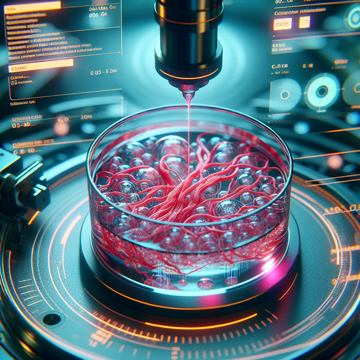Brainy Bionics, Living Tissues, and DNA on Demand: The Future of Making Is Here

Ready or not, the age of hacking biology, machines, and code into the fabric of everyday life is crashing the gates. Forget those lumbering, power-hungry neural networks that need data centers the size of shopping malls. Liquid neural networks are shaking up the scene—imagine an AI that needs just 19 “neurons” to steer a car, adapting to the world like a human brain, and using fewer resources than your average smart toaster. These lean, mean learning machines use nonlinear connections to flexibly respond to the chaos of real life, promising smarter, more responsible AI that you can actually understand and trust[1].
What happens when you take that same spirit of efficiency and mash it up with biology? Enter 3D bioprinting, where scientists are now fabricating living, vascularized tissues entirely from collagen—the protein that holds your entire body together. Carnegie Mellon’s latest trick: building micro-scale, perfusable “organs” with real blood-vessel-like channels using their FRESH printing system. It’s not just science fiction anymore—these bio-printed tissues are already reversing type 1 diabetes in animal models, and human trials aren’t far off[2]. It’s a revolution for disease modeling and therapy, with open-source plans that invite anyone with the skills (and a very clean lab) to join the fray.
But why let the pros have all the fun? Makers everywhere are already remixing biology and robotics in their garages. Open Bionics, for example, is cranking out bionic hands that wouldn’t look out of place on Iron Man. Their Hero Pro isn’t just a prosthetic—it’s a modular, wireless, touchscreen-ready tool that can swap fingers and rotate like a sci-fi gadget. MyoPod sensors read muscle signals right through the skin, translating your intent into precise finger movements. You can style it up with custom covers and control it all from your phone. Water-resistant, fast, and strong enough to lift your groceries, this hand brings comic book dreams to the real world, thanks to open-source designs and a thriving community of hackers and kids like Tilly, who wanted her bionic arm to be a fashion statement[3][5].
None of this wild innovation happens without the raw material—DNA. Ansa Biotechnologies is now taking synthetic gene-building to new lengths, literally. Their early access program lets scientists order custom DNA up to 50,000 base pairs long, with turnaround times that would make old-school gene jockeys weep with envy. Imagine: bespoke genetic blueprints for everything from self-healing crops to next-gen cell therapies, delivered straight to your bench with a “ship-or-free” promise[4]. This isn’t just for the big labs—these tools are breaking down barriers for anyone with ideas and a soldering iron.
The lines between code, flesh, and machine are officially blurred. Whether you’re printing organs, wiring up superhero prosthetics, or coding smarter, smaller AIs, the future is up for grabs—so get your hands dirty.
1. https://hackaday.com/2023/04/30/liquid-neural-networks-do-more-with-less/
2. https://medicalxpress.com/news/2025-04-3d-bioprinting-collagen-vascularized-tissue.html
3. https://www.thedailystar.net/tech-startup/news/bionic-hand-can-operate-even-when-detached-3876461
4. https://www.genengnews.com/topics/omics/ansa-biotechnologies-rolls-out-early-access-program-for-long-complex-synthetic-dna-orders/
5. https://hackaday.com/2018/03/06/nerds-unite-prosthetics-inspired-by-comics-and-beyond/